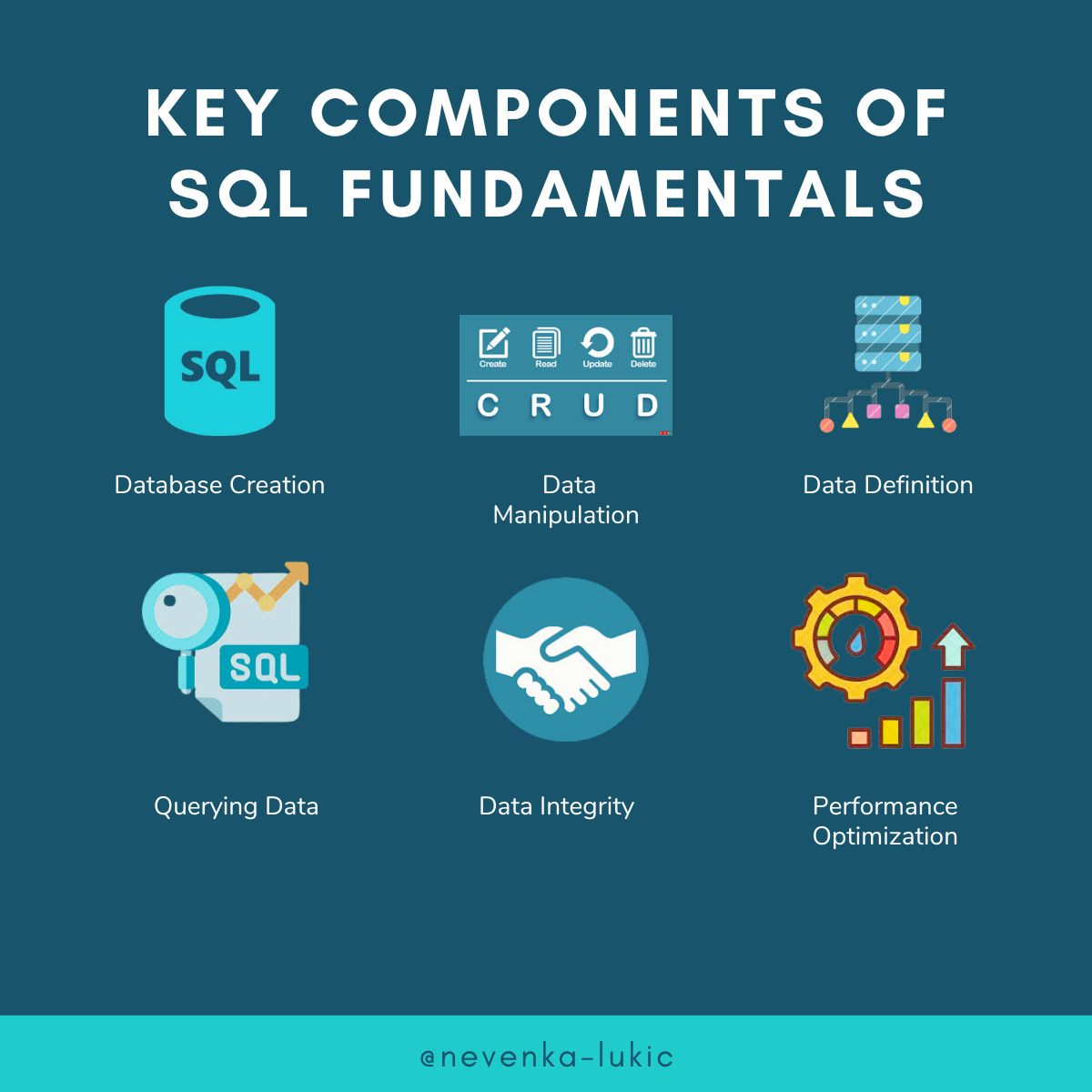SQL Fundamentals Guide For Data Engineers
Learn the Core SQL Components and Optimize Database Performance for Efficient Data Management
Understanding how to write SQL queries, create and modify tables, and work with different data types is one of the key skills for Data Engineers. Equally important is designing efficient and organized database structures to ensure data safety and optimal performance.
In one of my earlier articles, I talked about the skills you need to start a career as a Data Engineer.
Today I want to explain more about the key components of SQL fundamentals:
Creating Databases:
Learn how to to create a new database using SQL commands, specifying its structure, including tables, relationships, and constraints.
Practical Tip: Before creating a database, carefully plan its structure including the tables, relationships, and constraints. A clear understanding of the data model will help manage the database better.
Level up your database skills with "SQL Crash Course" - featuring 350+ practical examples and 140+ interview questions with solutions. Includes a complete e-commerce database for hands-on practice. Get your free sample chapter at futureproofskillshub.com/sql-crash-course. Find the paperback on Amazon, or grab the ebook on Apple Books, Barnes & Noble, and Kobo.
Master the complete tech stack at futureproofskillshub.com/books – from AI to Python, SQL, and Linux fundamentals. Plus, discover how to maintain peak performance and work-life balance while advancing your technical career in "Discover The Unstoppable You".
Data Manipulation:
Perform CRUD operations (Create, Read, Update, Delete) on data stored in the database. This involves using commands like INSERT, SELECT, UPDATE, and DELETE to add, retrieve, modify, and remove data from tables.
Practical Tip: Use database operations effectively, especially when performing multiple CRUD operations. This helps keep the data safe by making sure changes happen together.
Data Definition:
Define the structure of the database, including creating, altering, and dropping tables, as well as defining indexes, constraints (such as primary keys, foreign keys, unique constraints), and views.
Practical Tip: Regularly review and optimize the database schema. Eliminate unnecessary columns and indexes to improve query performance and reduce storage requirements.
Querying Data:
Write SQL queries to retrieve specific data from one or more tables in the database using SELECT statements. This involves filtering, sorting, grouping, and aggregating data as needed.
Practical Tip: Use aliases and table joins efficiently in your queries. This not only simplifies query writing but also improves readability and performance.
Data Integrity:
Make sure that the data in the database is correct, matches up between different tables, and can be trusted. This is done by setting up connections between tables and rules to check if the data is valid.
Practical Tip: Use foreign keys to maintain correct connections between tables, ensuring data consistency. Implement triggers for advanced validation and change tracking.
Performance Optimization:
Write efficient SQL queries, indexing tables appropriately in a way that helps speed up searches, and designing the database structure in a smart way to make sure that queries run fast and the whole system works well.
Practical Tip: Regularly monitor database performance, using tools that analyze query execution and performance metrics. Identify slow areas and optimize queries, table designs, or server settings to improve performance.
In the end, learning SQL basics isn't just about understanding words and commands. It's about knowing how to handle data, keep it safe, and make it work fast. With these skills, you can manage databases well and use data effectively in your work.


